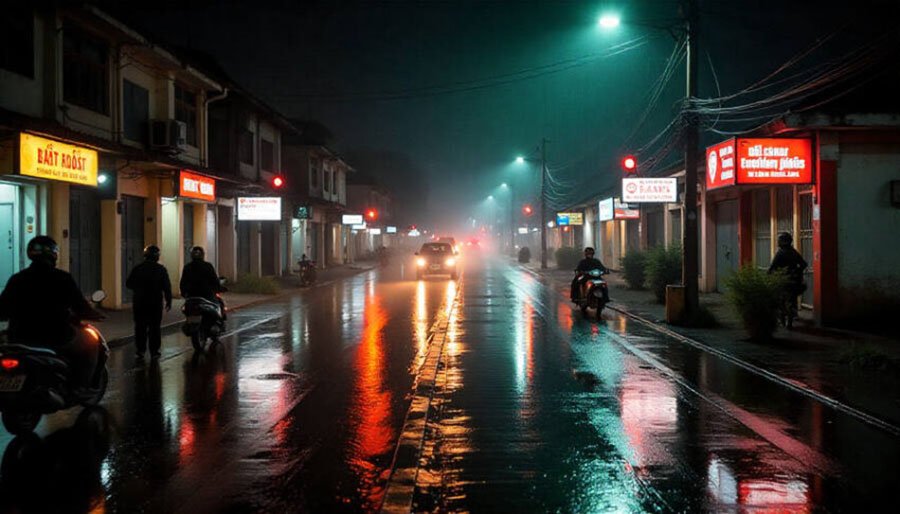читайте также
 Eurozone on Alert: ECB Flags Growing Vulnerabilities in the Financial System
Eurozone on Alert: ECB Flags Growing Vulnerabilities in the Financial System
 Hotel Investment 2025: New Opportunities for the Market — Key Insights from the Cayuga Conference
Hotel Investment 2025: New Opportunities for the Market — Key Insights from the Cayuga Conference
 Vietnam Hit by Record-Breaking Floods: Tourists Advised to Change Their Plans
Vietnam Hit by Record-Breaking Floods: Tourists Advised to Change Their Plans
 WTTC: Travel & Tourism to Create 91 Million New Jobs by 2035 — but a 43 Million Workforce Gap Looms
WTTC: Travel & Tourism to Create 91 Million New Jobs by 2035 — but a 43 Million Workforce Gap Looms
 How Children Receive Residence Permits in Europe: Full 2024 Statistics
How Children Receive Residence Permits in Europe: Full 2024 Statistics
 Cyprus to Introduce Construction Police as Oversight Tightens in 2026
Cyprus to Introduce Construction Police as Oversight Tightens in 2026
“Storm Break”: The Philippines Urges Tourists to Postpone Sea Travel as Cyclone Tino Strengthens and Disrupts Flights by Philippine Airlines and Cebu Pacific

The Philippines — a nation of turquoise lagoons, world-class diving, and island-hopping adventures — is living by nature’s rules this week. Tropical Cyclone Tino (international name Kalmaegi) entered PAGASA’s area of responsibility, quickly intensified into a typhoon, and brought heavy rains, strong winds, and high waves to the Visayas region and northern Mindanao. The Department of Tourism (DOT) has advised all tourists to postpone any sea travel, while airlines have adjusted schedules: dozens of domestic flights have been canceled, and delays have affected some regional routes. As of November 3–4, 2025, storm warnings remain in effect for several provinces, and coastal municipalities have restricted the movement of small vessels.
What’s Happening Now
According to PAGASA, the center of Typhoon Tino was located east of Samar Island, with sustained winds reaching 130–150 km/h and gusts up to 205 km/h. The cyclone moved westward, impacting the central Visayas. Several provinces were placed under Tropical Cyclone Wind Signals (TCWS) No. 3–4, prompting authorities to suspend maritime transport and evacuate coastal areas.
Air travel has also been disrupted. Philippine Airlines and Cebu Pacific reported the cancellation of more than 160 flights, including routes from Manila to Cebu, Tacloban, Bacolod, and Iloilo. Passengers are being offered free rebooking or refunds. International flights are mostly operating on schedule, though minor delays are possible due to ripple effects from the storm.
Why the DOT Urges Tourists to Postpone Sea Travel
Typhoon Tino has caused wave heights of up to 3–4 meters and strong winds, making sea travel dangerous even for experienced crews. The Coast Guard and local ports have temporarily closed operations for small and medium vessels. The DOT is urging tourists to postpone trips to Boracay, Palawan, and Siargao until weather conditions stabilize.
Travel Tips for Tourists
- Check your flight status frequently — airlines are updating schedules several times a day.
- Contact airlines directly — Philippine Airlines and Cebu Pacific are offering free rebooking options.
- Avoid planning sea transfers — even if ports reopen temporarily, weather can change rapidly.
- Monitor PAGASA updates — bulletins are released every 3–6 hours.
- Choose safe alternatives — cultural tours, gastronomy experiences, and sightseeing in Manila, Cebu, and Davao remain open and accessible.
Impact on the Tourism Industry
Hotels and resorts in the affected regions have temporarily reduced capacity or suspended guest check-ins. Many properties are offering flexible booking policies and rebooking assistance. Tourists currently in high-risk areas can expect support from local authorities and transport companies if travel routes need to be adjusted.
When to Expect Improvement
Forecasts indicate that the cyclone will continue to move westward across the Central Visayas and weaken within 24–36 hours. However, heavy rain and gusty winds may persist for several more days. The DOT and PAGASA recommend waiting for official storm warnings to be lifted before resuming sea travel.
Conclusion
Typhoon Tino serves as a reminder of how important it is to consider seasonal weather patterns and natural risks when planning trips across the Philippines. Tourists who stay cautious and follow official advisories can avoid travel complications and continue their journeys once the storm passes. The islands of Boracay, Palawan, and Siargao will remain as beautiful as ever — you’ll just need a little patience before returning to paradise.





